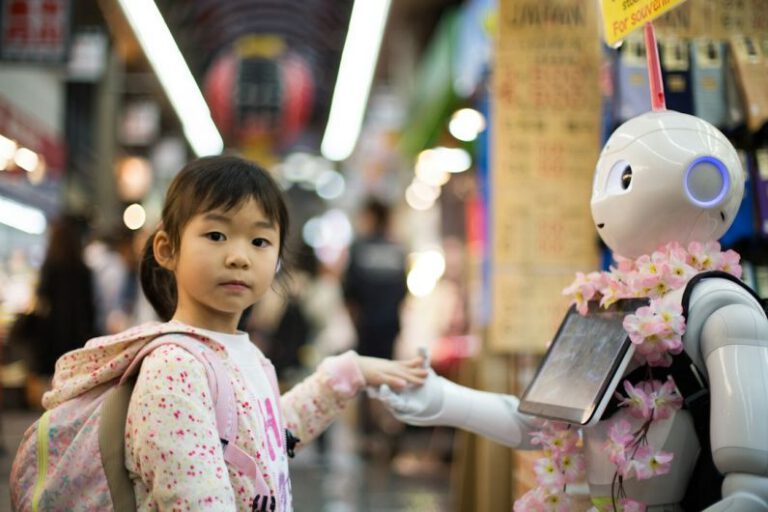The Role of Robots in Education
In the ever-evolving landscape of education, the integration of technology has become increasingly prevalent. One of the most intriguing developments in this realm is the utilization of robots to enhance the learning experience. Robots are no longer confined to science fiction; they are now making their way into classrooms around the world, revolutionizing the way students engage with and absorb information.
**Enhancing Student Engagement**
Traditional teaching methods often struggle to fully engage students, leading to disinterest and lack of motivation. However, robots present a novel and interactive way to capture students’ attention. These technological marvels can be programmed to deliver lessons in a fun and engaging manner, keeping students actively involved in the learning process. By incorporating elements of gamification and interactivity, robots can make learning more enjoyable and accessible to students of all ages and abilities.
**Personalized Learning Experiences**
Every student has unique learning preferences and paces, making it challenging for teachers to cater to each individual’s needs effectively. Robots, on the other hand, have the capacity to provide personalized learning experiences tailored to the specific requirements of each student. Through artificial intelligence algorithms, robots can adapt to the learning styles and abilities of students, offering customized lessons and feedback. This personalized approach not only enhances comprehension but also boosts students’ confidence and motivation to learn.
**Facilitating Skill Development**
In addition to delivering academic content, robots play a crucial role in facilitating the development of essential skills in students. Through interactive activities and real-time feedback, robots can help students hone their critical thinking, problem-solving, and collaboration skills. By engaging with robots, students have the opportunity to apply theoretical knowledge in practical scenarios, fostering a deeper understanding of concepts and encouraging creativity. This hands-on approach to learning equips students with the skills necessary to succeed in an increasingly complex and technology-driven world.
**Promoting Inclusivity and Accessibility**
One of the most significant advantages of integrating robots into education is their ability to promote inclusivity and accessibility. For students with disabilities or learning difficulties, robots offer a non-judgmental and supportive learning environment. These students can interact with robots at their own pace, without fear of stigma or prejudice. Furthermore, robots can provide additional support to students who require individualized attention, ensuring that no student is left behind in their educational journey.
**Preparing Students for the Future**
As we step further into the digital age, it is essential for students to develop the skills necessary to thrive in a technology-driven society. Robots in education play a vital role in preparing students for the future workforce, where technological literacy is a fundamental requirement. By engaging with robots from a young age, students develop a comfort level with technology and gain valuable experience in utilizing it as a tool for learning and problem-solving. This early exposure equips students with the confidence and skills they need to navigate an increasingly automated world.
**Empowering Educators**
While robots are often seen as tools for students, they also serve to empower educators in their teaching practices. Robots can assist teachers in delivering personalized lessons, tracking student progress, and identifying areas where individual students may need additional support. By automating routine tasks, robots free up educators’ time to focus on more complex and creative aspects of teaching, ultimately enhancing the quality of education provided to students.
**In Summary**
Robots are not merely futuristic gadgets; they are becoming integral components of the modern educational landscape. By enhancing student engagement, providing personalized learning experiences, facilitating skill development, promoting inclusivity, preparing students for the future, and empowering educators, robots are revolutionizing the way we approach education. As we continue to explore the possibilities of technology in the classroom, robots stand out as valuable allies in shaping the next generation of learners.






